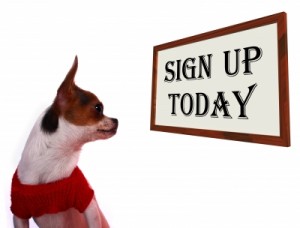 Web usability expert Jakob Nielsen is a big fan of email newsletters, which he says can “create much more of a bond between user and company than a website can.” The bad news is that the bond can be affected by usability problems like making it complicated to subscribe or unsubscribe.
Web usability expert Jakob Nielsen is a big fan of email newsletters, which he says can “create much more of a bond between user and company than a website can.” The bad news is that the bond can be affected by usability problems like making it complicated to subscribe or unsubscribe.
In his latest Alertbox, Nielsen mentions the release of a fifth edition of his comprehensive 666-page Email Newsletter Usability guide. (Buy the whole Email Newsletter Usability guide or as always, Nielsen generously shares many of his findings and tips in the summary found on the same page.) The latest round of research includes data about mobile reading of email newsletters.
Nielsen found that mobile reading reinforces all of the benefits given in his first usability study – they are informative, effortless, easy to leave to read until later, timely, act as a reminder, can help you do your job, and social/easy to share – and adds another: always available. He says:
“Mobile use thus makes email newsletters today an even more important way to stay connected with customers than they were in the past. This is particularly true because people sometimes have time to kill while using their phones.”
Here are some of the points I found interesting and what they mean:
Keep mobile in mind: Although most of the people Nielsen surveyed said they would read email newsletters on a computer rather than a cellphone, he suggests you cover the bases by using “responsive design.” An example he gave was a Pinterest newsletter that displayed in three columns when opened on a computer, but one column when opened on a mobile device. Or, just stick with one column.
Make it short and easy to read: Users spent just 51 seconds reading the average newsletter. That means the “layout and writing both need superb usability to survive in the high-pressure environment of a crowded inbox.” By “superb usability,” I think he means “easy to read.”
Make it easy to subscribe: On average, newsletters lost 19% of potential subscribers because of issues with the subscription design and process. I’ve changed my own mind about subscribing to something when asked for too much information (why do you need more than my name and email address?) or asked to go through too many steps.
Make it easy to unsubscribe: “People often stay subscribed to newsletters they don’t want (cursing the sender with every new issue that clutters their inbox),” Nielsen says. One of the funniest ways to unsubscribe I’ve seen is the ever-changing, in-your-face option that Christopher S. Penn provides in his Almost Timely newsletter. Unfortunately, I can’t find an example on his site, but it’s worthwhile subscribing to his newsletter, where you’ll see it every issue.
Be helpful and relevant: “Newsletters need to be smooth and easy: they must be seen to reduce the burdens of modern life.”
Be clear what the newsletter is about: To cut through the cluttered e-mail inbox, get to the point about the benefits of your newsletter in the subject line.
If you’re wondering if email newsletters have value in a world of email clutter, Nielsen says:
“The most important reason to publish an email newsletter might be this: It’s one of the few remaining ways to reach your customers without the tolls, fees, and restrictive rules imposed by the gatekeepers – search engines, social media sites, application stores, and the like. The newsletter goes right into each individual user’s inbox.”
Image: Stuart Miles and FreeDigitalPhotos.net.
